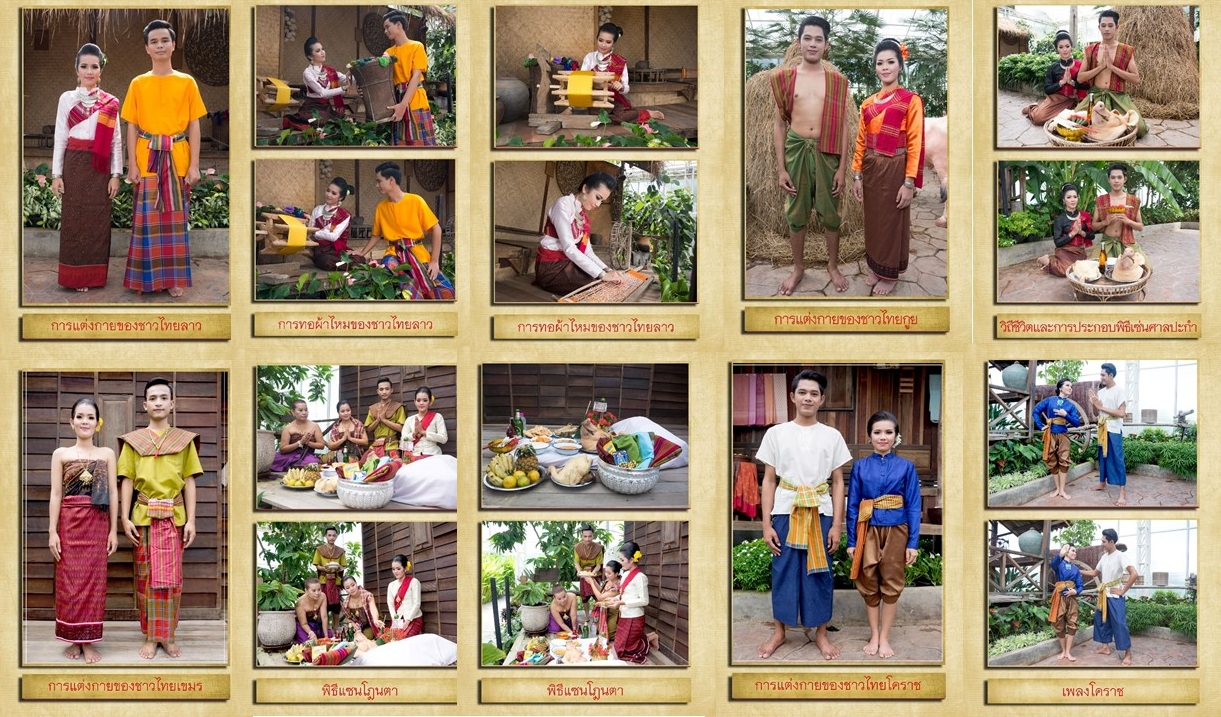The Perception of the Insider and Outside of Place Identity Buriram Province
Main Article Content
Abstract
This article aims to determine the Place identity of Buriram province and the perception of the people in and outside of Buriram on how they recognize the locality’s unique identities. Buriram’s city development policy highlighted sports as the lead change agent for its economic and tourism development scheme. This changed the Buriram from a drive-by city into a tourist destination under the concept of “2 eras of palaces city”. This was one of the main strategies used by the government and private sector together. The concept “sports for city development” is the mechanism used to drive Buriram city into a center for modern sports but with the sensation of ancient Khmer arts and culture mixed with the variety of sports activities. Today’s generation’s perception towards Buriram must have differ from the past. In order to align with Buriram’s provincial context which is multicultural and has a variety of unique local identities, the management of unique place identities for Buriram is categorized into 3 parts, 1) physical group, 2) activity group, and 3) symbols, signs and communications group. Results of the study showed that the perception of people in and outside of Buriram on its place identity includes both the original identity which stands out and has been the province’s symbolic identies which are ancient ruins and artifacts, culture and customs group, arts and crafts group, ethnic groups, and food culture group and the new identities which are the sports city and the sports and recreation group.
Downloads
Article Details

This work is licensed under a Creative Commons Attribution-NonCommercial-NoDerivatives 4.0 International License.
All material is licensed under the terms of the Creative Commons Attribution 4.0 International (CC-BY-NC-ND 4.0) License, unless otherwise stated. As such, authors are free to share, copy, and redistribute the material in any medium or format. The authors must give appropriate credit, provide a link to the license, and indicate if changes were made. The authors may do so in any reasonable manner, but not in any way that suggests the licensor endorses you or your use. The authors may not use the material for commercial purposes. If the authors remix, transform, or build upon the material, they may not distribute the modified material, unless permission is obtained from JARS. Final, accepted versions of the paper may be posted on third party repositories, provided appropriate acknowledgement to the original source is clearly noted.
References
Buriram Province Office. (1983). History of the Ministry of Interior in Regional Parts: Buriram Province. Khon Kaen: Siriphan Offset Printing House.
Buriram Rajabhat Iinstitute. (1999). Buriram: A City of Stone Castle, Extinct Volcano, Beautiful Silk, and Rich of Culture. Buriram: Buriram Rajabhat Iinstitute.
Buriram Cultural Office. (2010). Historical and Cultural Background of Buriram Province. Buriram: Buriram Cultural Office.
Chantub, R. & Pocharee, L. (2016). Tourism Identity Factors Affecting the Success of Tourism Managementin Chang Ta Kang Village Surin Province. WMS Journal of Management Walailak University, 5(1), 48-59.
Cresswell, T. (2009). Place. International Encyclopedia of Human Geography, 8, 169–177.
Devakula, P. M. L. (2011). Word, Though, Architecture: Concerning Post-Modern World Architectural Theory. 2nd Edition. Bangkok: Li-Zenn Publishing Limited.
Doxiadis, C. et al. (1974). Anthropopolis City for Human Development. Athens.
Feungfusaku, A. (2003). Identity. Bangkok: Academic Expert Committee on Sociology, National Research Council of Thailand.
Garnham, H. (1985). Maintaining the Spirit of Place: A Process for the Preservation of Town Character. Mesa AZ: PDA Publishers Corporation.
Hankinson, G. (2006). The management of destination brands: Five guiding principles based on recent developments in corporate branding theory. Brand Mangagement, 14(3), 240-254
Kavaratzis, M. (2005). Branding the City through Culture and Entertainement. Proceeding of The AESOP 2005 Conference, 13-18 July 2005, Vienna, Austria.
Karam, S. (2017). Buriram: A City of Sports. HUG BURIRAM MAGAZINE, 15(2), 11-20.
Leepreecha, P. (2003). Creating and inheriting the identity of the Hmong ethnic group. In Phutthaiphon, W. (Ed.), Identity discourse. Princess Maha Chakri Sirindhorn Anthropology Centre (Public Organisation). (pp. 22-33). Bangkok: O.S. Printing House.
Lynch, K. (1960). The Image of the City. Cambridge. MA: MIT Press.
Pimthong, N. (2015). Buriram United: A Model of Building New City. Muang Boran Journal. 41(2), 75-82.
Malpas, J. (1999). Place and Experience. Cambridge: Cambridge University Press.
Morgan, P. (2010). Towards a developmental theory of place attachment. Journal of Environment. 30,11-22.
Norberg-Schulz, C. (1985). Genius Loci : Towards a Phenomenology of Architecture. New York : Rizzoli.
Opasphanwong, J. (2016). Burirum United. a day magazine. 16(185), 68-139.
Patterson, M. & Williams, D. (2005). Maintaining research traditions on place: diversity of thoughtand scientific progress. Journal of Environmental Psychology, 25, 361–380.
Pocharee, L. (2011). The search for tourism identity participation of Chiangkhan Community. Mahasarakham University
Pongnak, I. & Disatapunahu, S. (2015). The Communityidentity of The Ancient Town of U-Thong Suphanburi Province. Veridian E-Journal Slipakorn University, 8(3), 511-523.
Proshansky, H. & Fabian, A. (1987). The development of place-identity in the child. In C. Weinstein & T. David (Eds.). Spaces for Children. New York: Plenum.
Proshansky, H., Fabian, A., & Kaminoff, R. (1983). Place-identity: Physical world socialization of the self. Journal of Environmental Psychology. 3, 57-83.
Relph, E. (1976). Place and Placelessness. London: Pion.
Phonkerd, S. (2008). History and Archaeology of Buriram Province. In V. Somchit-Aree (Ed), History of Buriram Province. (pp 58-101). Buriram: Buriram Municipality Office.
Tangran, S., Piyanukool, S., & Siriprapa, J. (2007). A Study of the Tourism Images in the Lower Northeastern Part of Thailand. Thailand Science Research and Innovation (TSRI).
Twigger-Ross, C. & Uzzell, D. (1996). Place and Identity Processes. Journal of Environmental Psychology, 16, 205–220.
Vichiansinpa, J. (2008). Geography and Volcano of Buriram Province. In History of Buriram Province. (pp. 2-16). Buriram: Buriram Buriram Municipality Office


